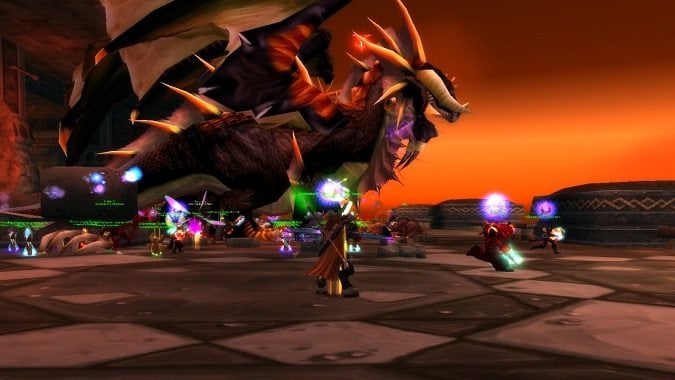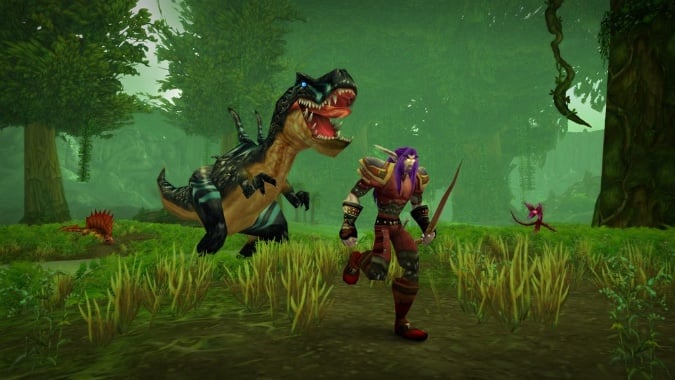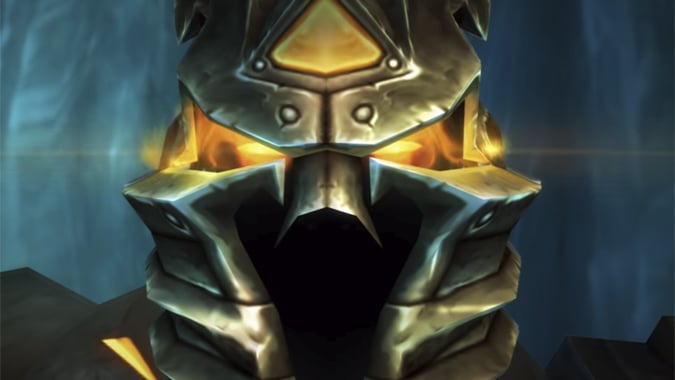World of Warcraft evolves, and our expectations should along with it

World of Warcraft will turn sixteen this year, and in a very real sense, World of Warcraft has been replaced seven times — it is not at all the same game it was sixteen years ago. Almost no one working on it now was there when it started. Few playing it now were playing it when it came out, and even fewer have continued to play it for the uninterrupted span of years that it has existed. In a very real way, WoW is a chimera, a game stitched together from itself.
It is actually somewhat difficult to really examine what that means. There are few games that last that long, fewer still that last that long in constant, continuous development — that continue to have content patches and expansion releases, that are selling new games on a routine basis. There has been a World of Warcraft expansion release in 2007, 2008, 2010, 2012, 2014, 2016 and 2018, with another planned for this year.

The Inexorable March of Time
In terms of how many patches WoW has had, it can be kind of tricky — do we count pre-release patches? Do we just count major content and .5 patches, or do we count every single patch, even ones that hotfixed one or two bugs? There were twelve major patches in vanilla WoW (not counting WoW Classic, of course) and we’ve seen between three and five patches per expansion ever since, if you’re selective about what you consider a patch. That means you could conservatively estimate that World of Warcraft has seen close to 50 important, content-driven patches in its life cycle. My rough estimate is 47 of them — yours will vary depending on what you consider an important patch, but it won’t be much lower than 40 at the lowest. That is a lot of patches, and it doesn’t even include patches that are just released to fix a major game breaking bug or add a few quality of life changes. What does that mean? Why am I bringing it up?
I think when we’re looking over the history of World of Warcraft, we cannot allow ourselves to forget the institutional memory of the game. We cannot forget just how long it’s been out, and how few of us have really played it for that whole period of time. If you started playing World of Warcraft in 2004 and have continued to play it since without taking an expansion or two off, you’re a very rare breed. And your viewpoint of the game may be skewed and biased to accept things that players who have played for, say, the past five years would never accept as reasonable.

The Bias of History
Yes, this is me admitting to potential bias. We all have biases. It’s just difficult to always be aware of and examine them. A game that runs as long as World of Warcraft has is going to breed strange biases on an almost generational level — players who started playing in 2004 and never stopped are going to have a completely different idea of what World of Warcraft is than players who started in 2004 and stopped in 2008. The game that second group of players know is almost alien to the first player, much less the player who started in 2015 and has been playing since. That last player knows the end of Warlords of Draenor, has seen Legion and Battle for Azeroth unfold. That’s the game to that player. That player’s expectations are almost entirely shaped by those expansions — and they’re not wrong.
This is me in part admitting that my old geezer staring at a cloud shaped like the laggy disaster that was the AQ launch event isn’t necessarily helpful in judging the modern game, but it’s also me marveling at the loss of institutional memory in World of Warcraft. The majority of its current player base does not have the sixteen years of memories of all those 40+ patches, and even those players that do have that memory will not remember it all equally, because we have lives and jobs and other things to remember.
Furthermore, even the development team doesn’t really have that level of institutional memory. They can’t. Many of them weren’t even playing the game when it came out, much less working on it. This is just an inevitable consequence of the game’s longevity. Sixteen years (or twenty, if we go back to the original alpha versions of World of Warcraft) is essentially almost geological time in terms of game development.

Everything and everyone changes
In a very real way, it’s irrelevant, but it’s still part of the history of the game, and the modern game is made up of all those incremental changes and patches. World of Warcraft in 2020 is very much shaped and altered by systems and bugs and bug fixes going all the way back to before release, and almost no one playing or even working on it has been there for that whole sixteen year period. We are playing Orcs and Gnomes on the Ship of Theseus. The game not only isn’t what it was in 2004, or 2009, or what it might become in 2021, it’s not even what it was in 2018 when Battle for Azeroth launched.
You could excavate down to the bedrock of what World of Warcraft means to you, but it’s forever shifting because this isn’t an artifact, it’s a living game. It’s happening now, even as it carries with it the game we had all those years ago. In a way, the very existence of WoW Classic is itself paradoxical — it’s a game that tries to be as close to faithful as it can be to a time period that’s gone and a style of game development that doesn’t exist any more.
What it will become in time fascinates me, because Shadowlands absolutely isn’t the same WoW I’ve played for years. A WoW that doesn’t get past level 60, but has all the content from every expansion so far? That’s not any WoW that’s ever been. I’d say that 2020 is the year that everything changes, except that was 2018, and 2016, and so on all the way back to World of Warcraft’s first patch. It always changes. It always has.
Please consider supporting our Patreon!
Join the Discussion
Blizzard Watch is a safe space for all readers. By leaving comments on this site you agree to follow our commenting and community guidelines.
 @MatthewWRossi
@MatthewWRossi




